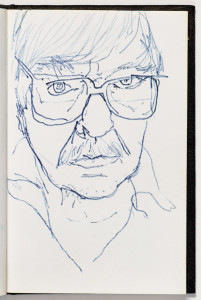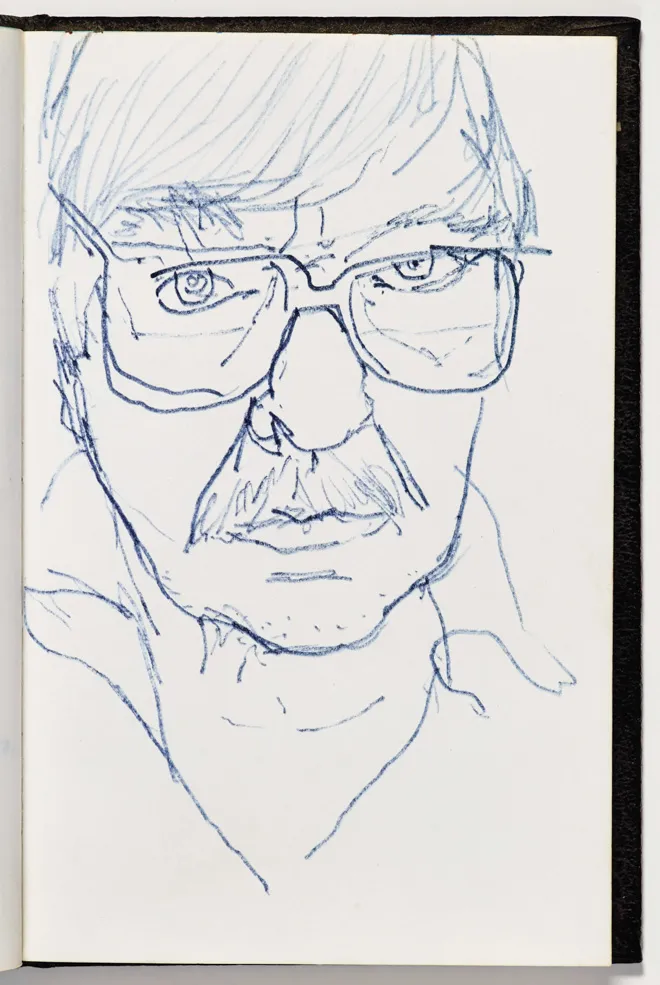
“Richard Diebenkorn: The Sketchbooks Revealed” is the first ever public viewing of California-based artist and Stanford alum Richard Diebenkorn’s personal sketchbooks. The Cantor Arts Center has successfully digitized all 29 of his sketchbooks, which are arranged chronologically and accessible at the exhibit itself via touchscreen display.
Known for toting a sketchbook everywhere he went, Diebenkorn studied scenes from life that would eventually form the basis of large-scale abstract paintings like his “Ocean Park” series. By visually journaling his travels around the Bay Area, Diebenkorn explores lines, shape and form in surprising ways that belie the seeming mundaneness of his subjects.
Diebenkorn’s works are displayed alongside those of Edward Hopper, an American realist painter whose influence is readily apparent in Diebenkorn’s works. Both artists document everyday scenes with a loose, painterly quality. Diebenkorn’s affinity for the commonplace and the suburban is perhaps best represented by his 1943 painting entitled “Palo Alto Circle.” The American painter slathers warm oil paint on canvas to indicate rust-worn railroad tracks against a backdrop of suburban architecture. Subdued and rustic, the painting captures the homely ambiance of Palo Alto through its color scheme and through the horizontal lines that dominate its composition.
Diebenkorn is known more for his sprawling abstract landscape paintings than for his renditions of the human figure; nevertheless, the pages of his sketchbook are filled with gesture drawings. His lines are consistently loose and free, dotted with ink splatters, and he often sacrifices anatomical accuracy in favor of energy and movement.
It is interesting to trace the progression of Diebenkorn’s style across sketchbooks. Earlier sketchbooks in the series show Diebenkorn’s experiments with tone and shadow on the figure, while later sketches tend to focus exclusively on the line. In his last two sketchbooks, Diebenkorn starts to gravitate towards shapes and abstraction, playing with ink and its unique qualities as a medium – a distinct mix of control and spontaneity.
While digital archives are important because they provide accessibility to lesser-seen works, they are no substitute for the physicality and thereness of the actual works on display. A page from Sketchbook 10 features a gouache landscape rendered exclusively using colorful geometric shapes, reminiscent of Diebenkorn’s more experimental large scale paintings. In person, the colors in the scene appear saturated and vibrant, and the presence of Diebenkorn’s hand is apparent in the strokes of paint on the page.
“Richard Diebenkorn: The Sketchbooks Revealed” traces the evolution of Diebenkorn’s style from gestural sketches to hard-edged abstraction. Diebenkorn is notable for his commitment to constantly stretching the boundaries of his art-making practice. In his own words: “Attempt what is not certain,” and “be careful only in a perverse way.”
“Richard Diebenkorn: The Sketchbooks Revealed” is on view at the Cantor Arts Center until Feb. 8, 2016.
Contact Eric Huang at eyhuang ‘at’ stanford.edu.
